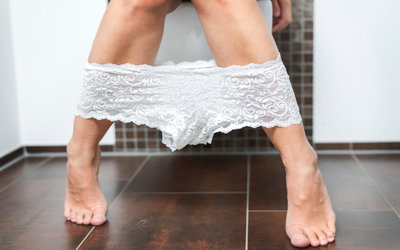Getting Rid of Yeast Infections: Alternative Therapies
A yeast infection is considered a sexual wellness problem, but there are many ways in which you can contract such an infection. The fungus Candida albicans is always present in your vagina, but a variety of factors can cause this fungus to overproduce and cause a yeast infection. Causes of yeast infections include antibiotics, birth control pills, wearing tight undergarments, and a suppressed immune system, and complementary wellness therapies emphasise eliminating these causes to treat the yeast infection, rather than eliminating the fungus. But which therapy is best for your wellbeing?
1. Nutritional Therapy: The foundation of nutritional therapy is dietary changes and supplements, and this is no less the case when it comes to treating and preventing yeast infections. Certain foods can contribute to a yeast infection, either by encouraging the growth of the Candida albicans or by taxing your body’s immune system. Therefore, if you have a yeast infection, you may want to avoid the following foods until it clears up, and eat them in limited amounts thereafter:
- Sugars (including honey, fruit juices, and maple syrup)
- Artificial sweeteners
- Cheese
- Dried fruit
- Alcohol
- Mushrooms
- Meat, poultry, and milk (which can have traces of antibiotics in them)
You can also keep fungal growth in check by consuming items that can introduce “good” bacteria into your body. Live yoghurt and the bacteria Lactobacillus acidophilus and certain species of Bifidobacterium, which can be taken orally or used as a douche, can all prevent yeast infections – just be wary of artificially sweetened yoghurt. Other great antifungal foods include garlic, and anything containing caprylic acid, grapefruit seed extract, and undecenoic acid.
2. Herbal Medicine: There are several herbs which can bring your fungus levels back down to a healthy point, while others can strengthen your immune system. As well as being a folk-favourite for treating athlete’s foot, the bark of the pau d’arco tree is an excellent treatment for vaginal yeast infections – with the research to back it up. Studies have shown that the lapachol found in the bark is what works to fight infections, and you can consume this herb easily in the form of capsules, extract, or tea. Goldenseal is one of the most commonly used herbs for its immune-boosting properties, but you should not use it if you’re pregnant. Other herbal remedies for yeast infections include calendula, echinacea (purple coneflower), German chamomile, ginger, rosemary, tea tree and thyme.
3. Homeopathy: Using highly diluted doses of a natural substance that would produce the same infection symptoms if given in full strength to a healthy person, homeopathic medicine can stimulate your body to overpower the yeast infection. After asking you about your symptoms and general state of your emotional and physical wellness, your homeopath will give you an individualised remedy. Before attending your meeting, make sure you know the answers to the following questions:
- Is there any vaginal discharge, and what is its colour, consistency, and smell?
- Does walking or lying down increase the amount of discharge?
- Is there any discomfort around your vagina?
- Do you find it difficult or uncomfortable to urinate?
Once your practitioner is equipped with this information, he or she will prescribe the right remedy. This may be in the form of borax veneta, calcarea carbonica, kreosotum, mercurius solubilis, pulsatilla nigricans or sepia. For the most common symptoms of yeast infections, medical experts have formulated combination remedies that are available over the counter. However, because these remedies lack the individualisation that you usually get in homeopathy, they are considered less effective.


Comments are closed.